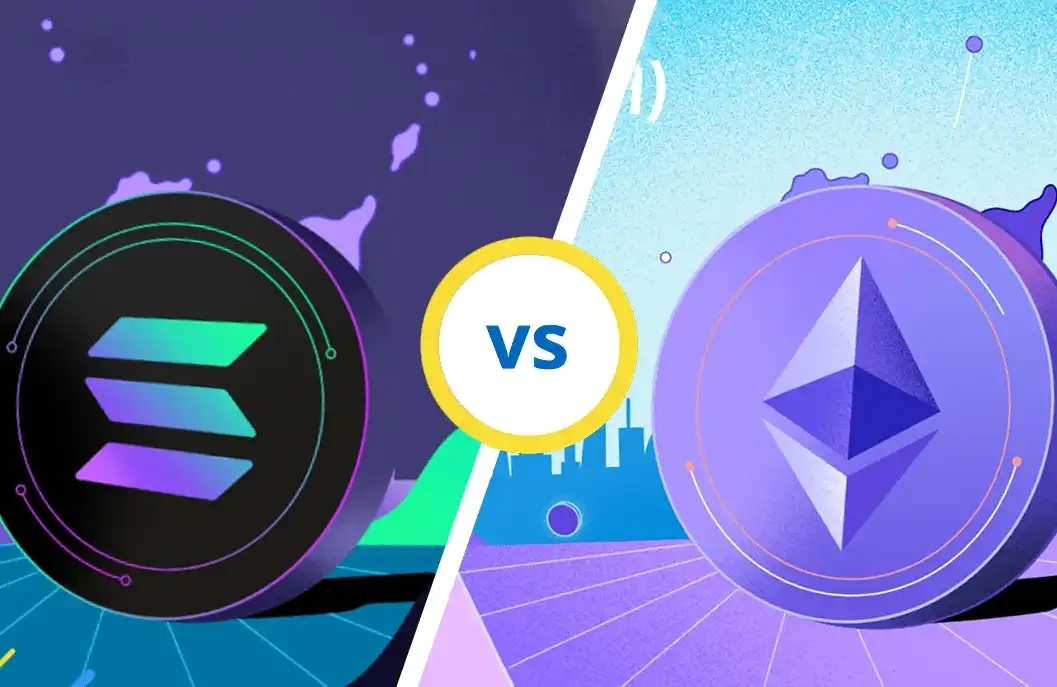Digging Deeper into Pantera Founder: Princeton Mafia, the "Missionary" Behind $4 Billion in Assets
Original Title: Dan Morehead assembled his Princeton mafia to pile into Bitcoin at $65 in 2013, leaving his Wall Street career behind to build a $5 billion crypto fund
Original Author: Leo Schwartz, Fortune Magazine
Original Translation: Luffy, Foresight News
In 2016, Dan Morehead embarked on a global tour to spread the "gospel" of Bitcoin. The former Goldman Sachs and Tiger Management trader, who was completely captivated by Bitcoin a few years earlier, believed it would reshape the global economy. His faith in this currency was so strong that he came out of semi-retirement, transforming his hedge fund Pantera Capital into one of the world's first Bitcoin funds.
This new venture was launched in 2013 and gained rapid momentum, receiving support from two Princeton alumni, Pete Briger and Mike Novogratz, both from the private equity giant Fortress Investment Group. The three watched with joy as Pantera's initial $65 Bitcoin purchase soared to over $1,000 by the year-end. However, disaster struck when hackers plundered Mt. Gox, the leading cryptocurrency exchange at the time, causing a massive 85% drop in Bitcoin's price. "People would say, 'Aren't you the one doing that dead Bitcoin thing?'" Morehead recalled. "It's alive!" was always his response.
During the 2016 Bitcoin preaching tour, Morehead arranged 170 meetings. Every time he walked into a potential investor's office, he would spend an hour arguing why this new asset was the most compelling opportunity. The result? He only raised $1 million for the struggling fund. Even worse, Morehead's own appearance fees totaled about $17,000. "I made $100 per meeting just to convince people to buy Bitcoin," he told Fortune magazine.
Less than a decade later, as the price of Bitcoin approached $120,000, Morehead's early difficult years had become part of the founder's myth — akin to Apple's Steve Jobs and Steve Wozniak tinkering with inventions in Jobs' parents' garage or Warren Buffett and Charlie Munger exchanging stock tips at a dinner in Omaha.
Today, Pantera's various crypto funds manage over $4 billion in assets, holding positions in digital assets such as Bitcoin and Ethereum, as well as investments in projects like Circle (which went public in June) and Bitstamp (acquired by Robinhood earlier this year for $200 million). However, in the competitive world of crypto venture capital, the company's uniqueness lies in its "pioneer" status: it is a renowned bridge between the conservative traditional financial world and the once rebellious crypto industry. And the key figure, Morehead, in this industry full of legendary figures, is a low-key doer.
"I'm very stubborn, and I fully believe (in Bitcoin) changing the world," Morehead told Fortune, "so I've stuck with it all along."
The Wild Ride of Bitcoin

Bitcoin's price trend since 2013. Data Source: CoinGecko
The Princeton "Gang"
In an era when Wall Street had not yet penetrated the blockchain industry, Morehead seemed out of place in the early days of cryptocurrency's chaos. He was a dual-sport athlete at Princeton University (football and heavyweight rowing), and still retains the broad shoulders and square jawline of his youth. This contrasts sharply with those thin, idiosyncratic individuals who spend all day on online forums. Instead, Morehead comes from the traditional financial world and is still accustomed to wearing a suit jacket.
Prior to encountering Bitcoin, Morehead had a long trading career. After working at Goldman Sachs and Tiger Management, he founded his own hedge fund, Pantera, which collapsed during the 2008 financial crisis. It was around that time that a mysterious figure named Satoshi Nakamoto released a whitepaper online, introducing Bitcoin to the world.
In 2011, Morehead first heard about Bitcoin from his brother, vaguely knowing that his Princeton classmate Gavin Andresen ran a website where users could earn 5 bitcoins just by cracking a captcha (currently worth approximately $575,000). But he didn't pay much attention until a few years later when another classmate, Briger, invited him to Fortress Investment Group's San Francisco office for coffee to discuss cryptocurrency, with Novogratz joining remotely. "Since then, I've been captivated by Bitcoin," Morehead said.
The tech industry is known for its "mafia," where the likes of the PayPal mafia later led the next generation of startups. In the crypto field, the "mafia" does not come from a company but from a university: Princeton has nurtured some of the most influential projects in the industry. Briger and Novogratz are key supporters of Pantera, with Morehead even moving into the unused space of Fortress Investment Group's San Francisco office. Briger still maintains a behind-the-scenes influence in the crypto space and recently joined the board of directors of Michael Saylor's $100 billion market cap Bitcoin-holding company, Strategy. Novogratz, on the other hand, founded Galaxy, becoming one of the largest crypto conglomerates. Another classmate, Joe Lubin, later became a co-founder of Ethereum.
But in 2013, Ivy League graduates active in high-end fields like private equity and macro trading became interested in Bitcoin, which still sounds far-fetched. Briger told Fortune magazine that he initially heard about Bitcoin from Argentine entrepreneur and early cryptocurrency enthusiast Wences Casares, with whom he shared a room at a Young Presidents' Organization meeting in the Cayman Islands. Briger quickly saw the potential to disrupt the global payment system, a stance he maintains to this day, although he believes Bitcoin is still in its early stages. He said Bitcoin's outlook is akin to the internet, which facilitated a new form of information dissemination. "The way capital moves hasn't caught up, which is regrettable," he said.
After sharing this idea with Novogratz, they thought Morehead, who had experience in the forex market, was the right person to helm the ship. When Morehead decided to dedicate the rest of his financial career to the crypto space, he repositioned Pantera as a Bitcoin fund, open to external investors. Briger and Novogratz both joined as limited partners, while Fortress Investment Group and venture capital firms Benchmark and Ribbit joined as general partners (later exiting). His mentor at Tiger Management and legendary investor Julian Robertson also invested in the subsequent fund.
Pantera's Rebirth
In the early days of the cryptocurrency frenzy, entrepreneurs had to face intense market volatility, which, compared to today's volatility, was child's play. However, Novogratz recalls that the biggest trouble was not the price rollercoaster but the inability to buy Bitcoin at all.
He once approached Coinbase, which was only a year old at the time, to buy 30,000 bitcoins, worth about $2 million at the time. A window popped up, informing him that his limit was $50. After discussing with Olaf Carlson-Wee, Coinbase's first employee who later became a well-known figure in the cryptocurrency space, Coinbase agreed to raise his limit to $300.
However, Morehead's most admirable achievement may have been staying the course during the downturn from 2013 to 2016. During that time, the price of Bitcoin was low, and apart from the closed-off blockchain community, no one cared about it. “In those quiet years for cryptocurrency, Dan was out there grinding,” Novogratz told Fortune.
That era also had its highlights, including three annual retreats Morehead hosted at his Lake Tahoe home. During one of them, Jesse Powell, the founder of the exchange Kraken, did not take up Morehead’s offer to fly on his private plane and instead chose to drive. “There were a lot of people from the bitcoin community on the plane, and he was worried that if the plane went down, bitcoin would go down with it,” Morehead recalled.
Unlike many of his peers, Morehead never positioned himself as a “bitcoin maximalist” (meaning someone who believes there should be no other cryptocurrencies). After acquiring 2% of the global bitcoin supply, Pantera became an early investor in Ripple Labs, which issued the digital currency XRP. “My thought was, obviously bitcoin is the most important,” Morehead said, “but there is more than one internet company.”
According to Morehead, Pantera's venture projects have seen an 86% profitability rate. Considering that the vast majority of venture-backed startups fail, this figure is astonishing. The crypto space may be more forgiving, as many projects hold cryptocurrency, meaning that even if a startup's product fails, the investment value often persists.
Morehead now spends half of his time each year in Puerto Rico, which has become a hotbed for crypto. Joey Krug, a partner at Pantera at the time and now at Peter Thiel’s Founders Fund, has moved there, prompting Morehead to do the same. He estimates there are 1,000 blockchain entrepreneurs on the island, but they are under scrutiny for driving up real estate prices. Morehead faced scrutiny from the Senate Finance Committee, questioning whether he violated federal tax law by moving to the island and realizing over $850 million in capital gains from Pantera. He told The New York Times earlier this year that he believes he is “tax compliant,” but declined to comment further to Fortune.
The Future of Bitcoin
Morehead acknowledges that the crypto industry is full of speculative behavior, and Pantera, unlike many venture capital firms, does not dabble in meme coins. However, he believes this should not overshadow the grand vision of blockchain reshaping global finance. "It's absurd to think that a little bit of side-door action could take down the entire blockchain industry," he said. "The GameStop event doesn't mean the entire U.S. stock market is flawed."
Pantera continues to expand, including raising its fifth venture fund with a target of $1 billion. Morehead stated that fundraising would close after investing in the fourth fund later this year. Pantera has also ventured into the hot digital asset treasury space, where public companies incorporate cryptocurrency into their balance sheets.
But Bitcoin remains at the core of Pantera's strategy. By the end of last year, its Bitcoin fund had achieved a return of 1,000 times, with a cumulative return of over 130,000%. When asked about the future price of Bitcoin, Morehead's answer has always been consistent: doubling within a year. This simple model has generally worked, although he acknowledges that the growth momentum may be slowing down. He believes Bitcoin will still increase by an order of magnitude, nearing $1 million, but this will be the final 10x growth.
If Bitcoin never reaches that milestone, Morehead is also willing to face criticism. After all, in 2016, he was still arguing adamantly for $500 Bitcoin. And less than a decade later, he is just getting started. "I think the vast majority of institutions' belief in Bitcoin is just beginning," he told Fortune magazine. "We have decades ahead of us."
Welcome to join the official BlockBeats community:
Telegram Subscription Group: https://t.me/theblockbeats
Telegram Discussion Group: https://t.me/BlockBeats_App
Official Twitter Account: https://twitter.com/BlockBeatsAsia
 Forum
Forum

 Finance
Finance
 Specials
Specials
 On-chain Eco
On-chain Eco
 Entry
Entry
 Podcasts
Podcasts
 Activities
Activities
 OPRR
OPRR








